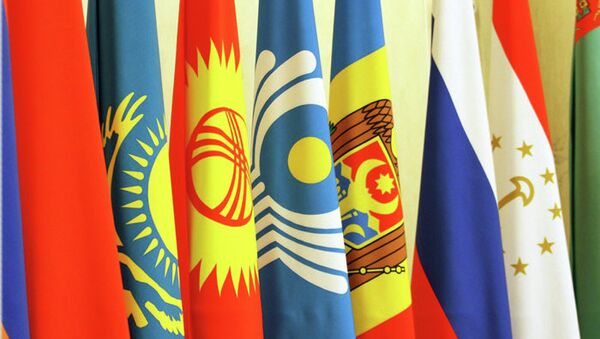MOSCOW, December 8 (Sputnik) — The signing of the agreement followed events in the mid-80s in the former Soviet Union. Economic and political changes led to deepening contradictions between the Union's center and its republics, struggling for independence.
In 1990, all of the Union's republics adopted the declaration on state sovereignty, setting their own laws as a priority over the laws of the Soviet Union.
On March 17, 1991 a referendum was held to hold on to the fragmenting Soviet Union with 76.4 percent of voters backing the decision.
This decision marked the beginning of the Novo-Ogaryovo process within the framework of which the agreement on the Union of Sovereign Republics project was created in the spring-summer of 1991. The agreement was to be signed August 20, 1991. However, the plan was disrupted by the August 19-21 coup attempt undertaken by the conservative wing of the USSR government.
In autumn 1991 the Novo-Ogaryovo working group prepared a new Union Agreement project in the form of a confederation with the preliminary signing designated for December 9.
In September 1991, the USSR recognized the sovereignty of Lithuania, Latvia and Estonia. In December, 90 percent of Ukrainians voted for their country's independence.
On December 8, Russian President Boris Yeltsin, Ukrainian President Leonid Kuchma and Belarus Chairman of the Supreme Council Stanislav Shushkevich signed an agreement in the governmental residence of Viskuli in Belovezhskaya Pushcha, Belarus. This agreement declared the Soviet Union to be dissolved and terminated the work of the Soviet Union government from that moment forward, ending the possibility of a confederation agreement and proclaiming the creation of the Commonwealth of Independent States.
The Agreement adopted a commitment to the principles of the UN Charter, the Helsinki Accords and other international responsibilities. The agreement stated that after it was signed, no third party norms, including the USSR norms, could be permitted on the territories of member states.
The parties agreed to further develop equal and mutually beneficial cooperation among their peoples and states in the field of politics, economy, culture, education, health, environment, science, trade, humanitarian and other areas, promoting a vast exchange of information.
The agreement stressed the integrity of sovereign borders but the freedom of movement of citizens within the CIS.
The founding states determined their willingness to actively cooperate in international security, a reduction in military spending and the decommissioning of nuclear weapons, conducting general and complete disarmament under strict international control.
The agreement contained a list of the main joint activities within the common coordinating institutions, including foreign policy, common economic area, customs policy, transport and communication, environmental protection and fight against crime.
All of the republics of the former Soviet Union and other countries that share the goals and principles of the document were able to join.
The leaders of the signing states stressed that they were perfectly aware of their responsibility to their people and the international community and that the urgent need for the practical implementation of the reforms determined their actions.
On December 10, 1991 the agreement was ratified by the parliaments of Ukraine and Belarus, and on December 12 by the Supreme Council of Russia.
On December 21, 1991 in Almaty, Kazakhstan, 11 leaders of 15 former Soviet republics (all bar Lithuania, Latvia, Estonia and Georgia) signed the Protocol to the CIS Agreement, setting December 8 as the date for the establishment of the CIS.
According to the Protocol, Azerbaijan, Armenia, Moldova, Kazakhstan, Kyrgyzstan, Uzbekistan, Turkmenistan and Tajikistan joined the Commonwealth of Independent States as its founders and on an equal standing. The same day, the leaders of the 11 countries also signed the Almaty Declaration that reaffirmed the basic objectives and principles of the CIS.
Georgia signed the Protocol in December 1993. On August 12, 2008, Georgian President Mikheil Saakashvili announced the country's withdrawal from the CIS. On August 18, 2009 Georgia formally withdrew from the Commonwealth.
On January 22, 1993 in Minsk, Belarus, the Commonwealth Charter was adopted. Ukraine and Turkmenistan did not sign the Charter and were determined to be founders and participating states of the CIS, but not member states.
In August 26, 2005 Turkmenistan announced itself to be an associate member of the CIS.

